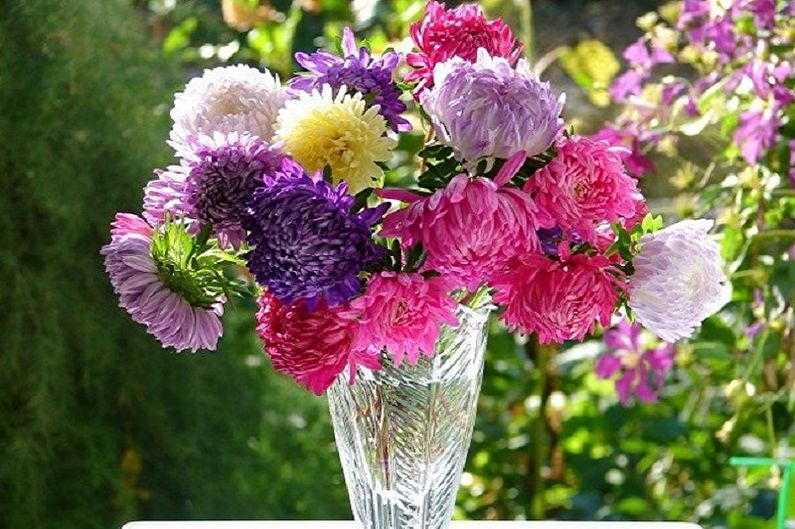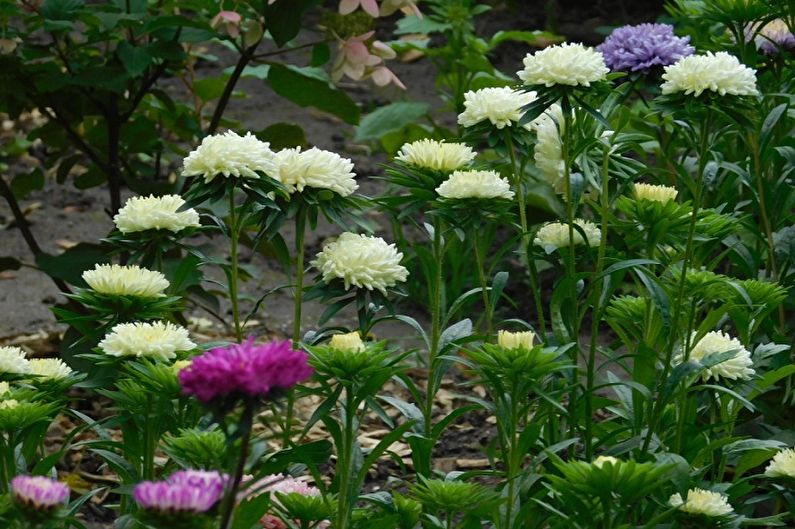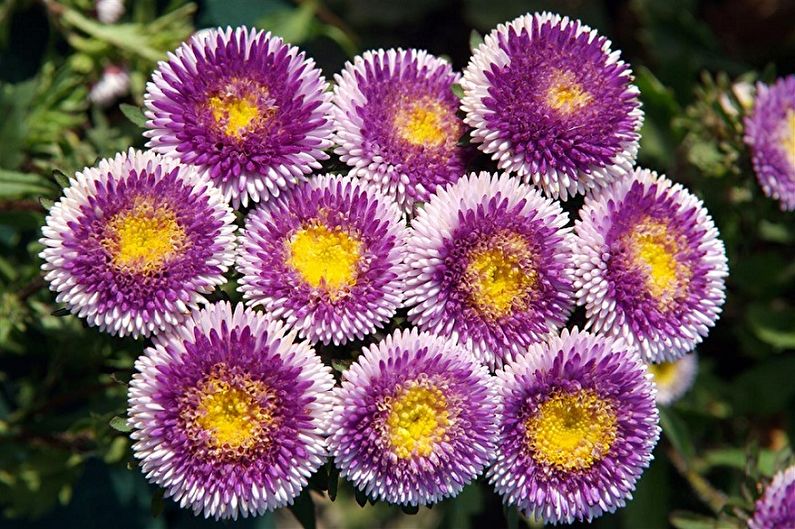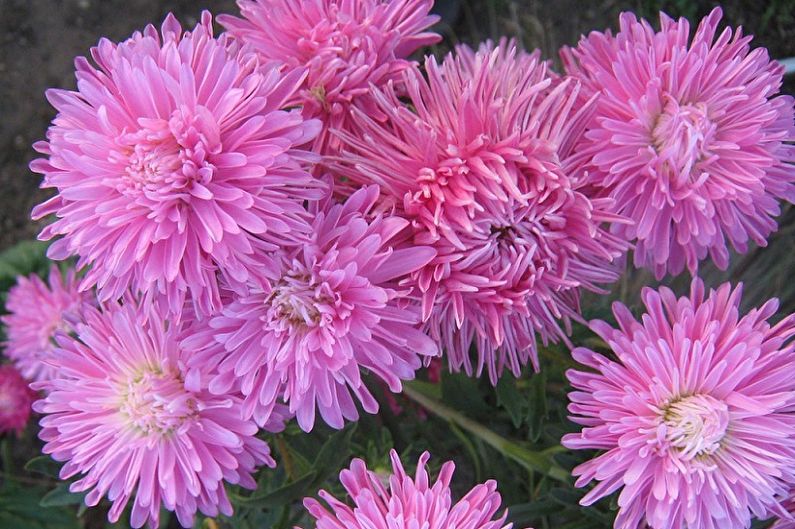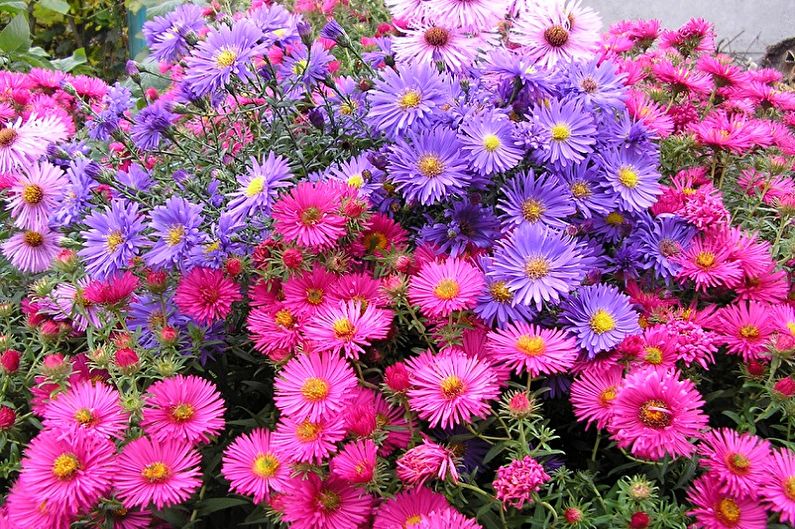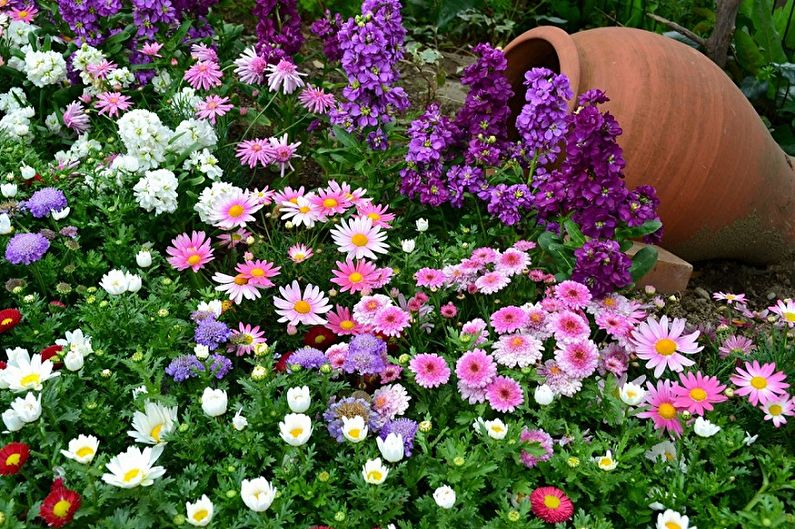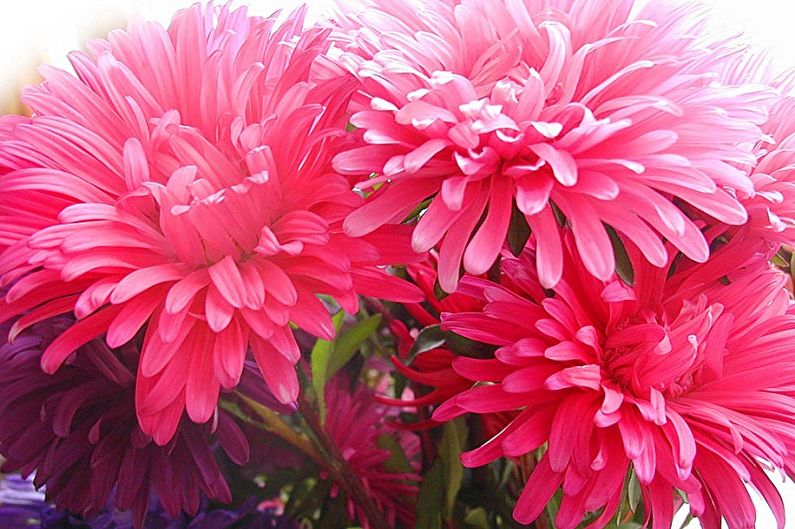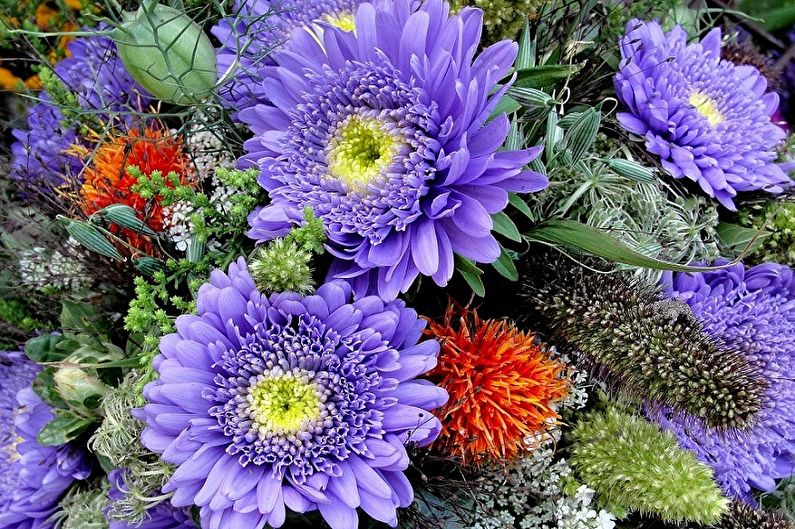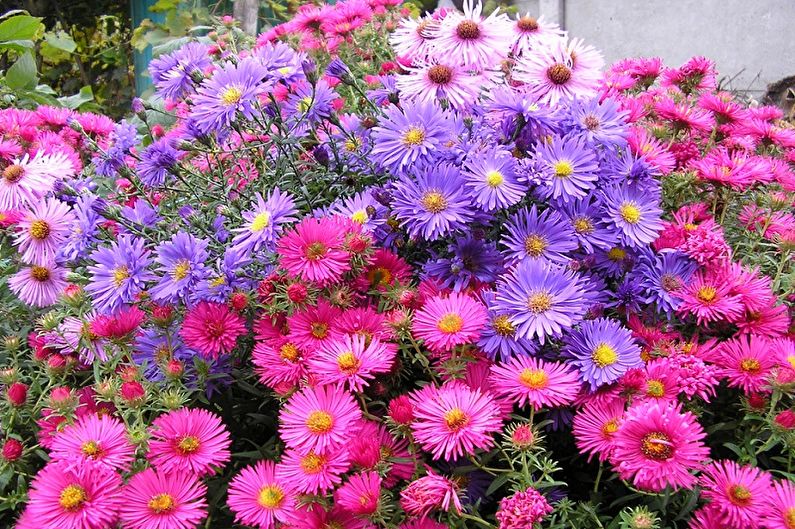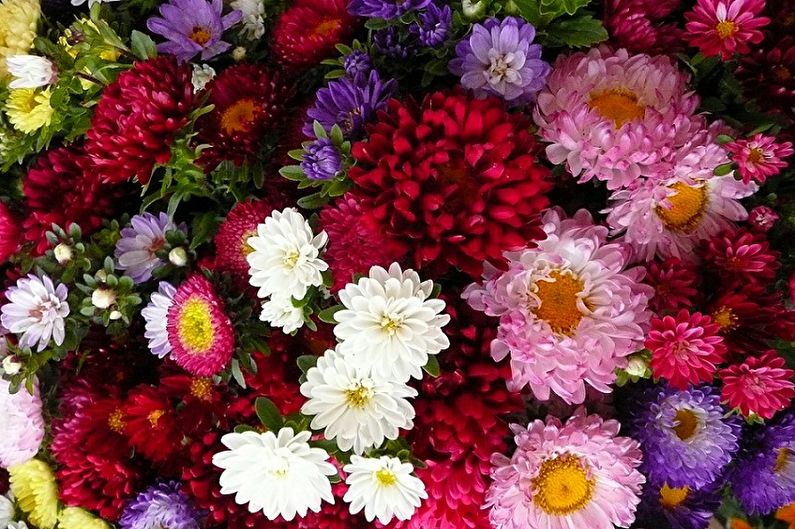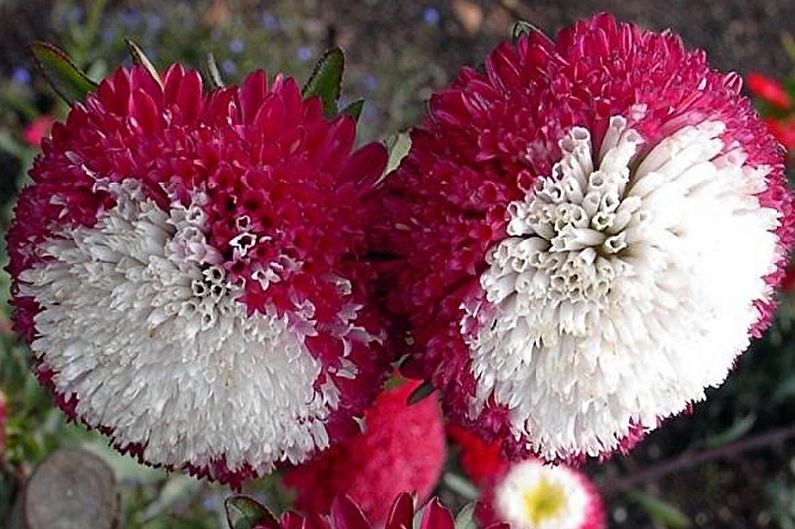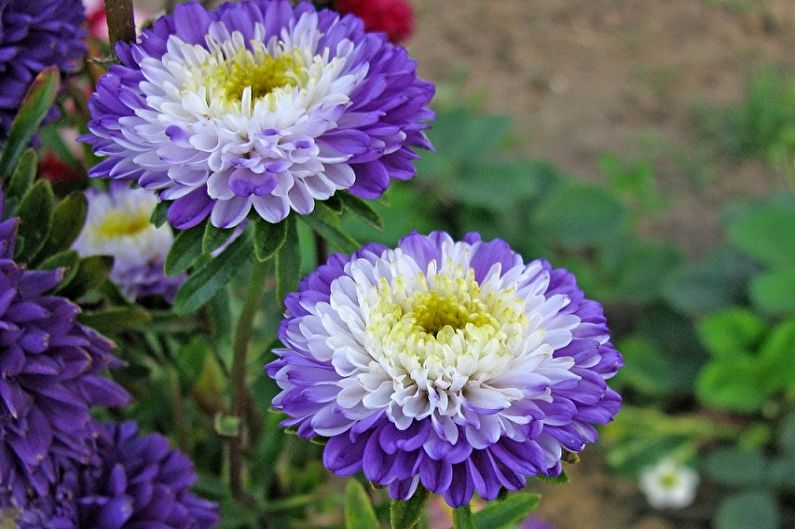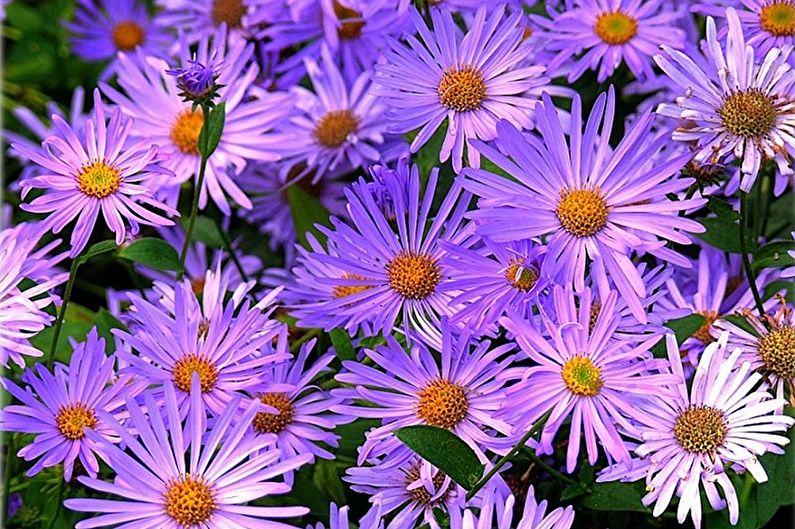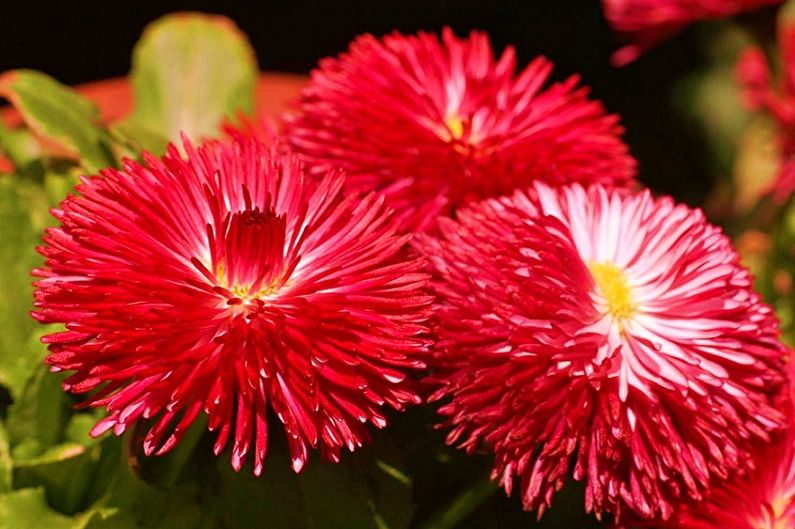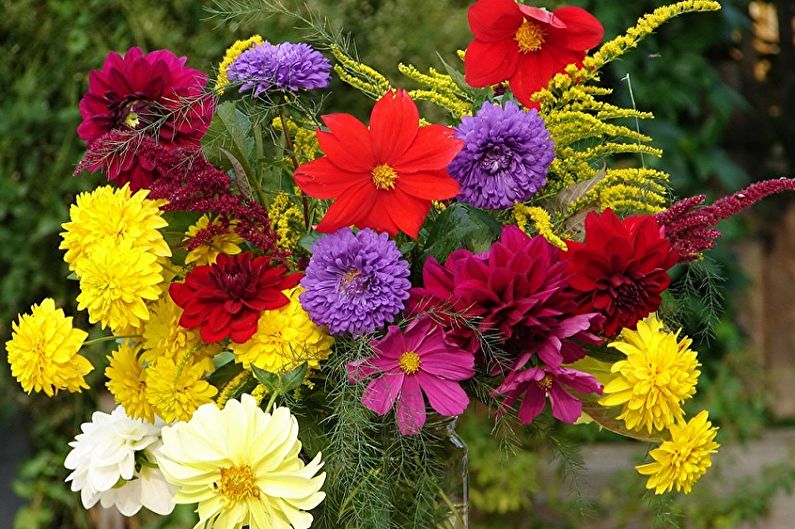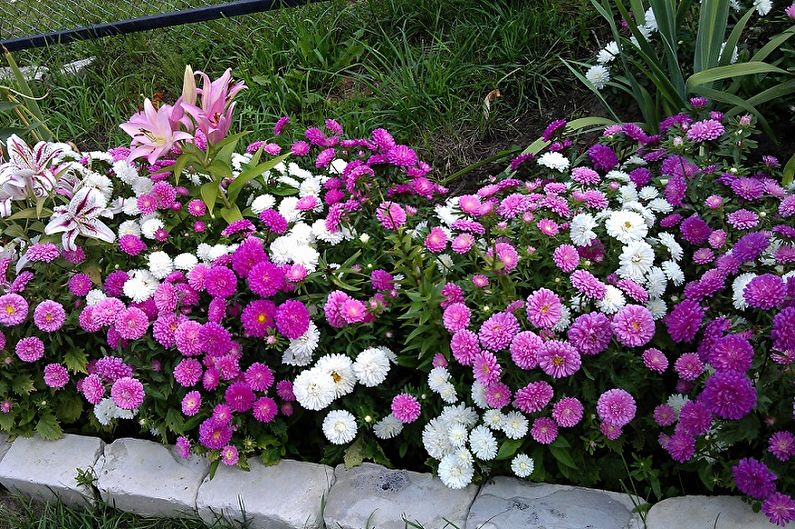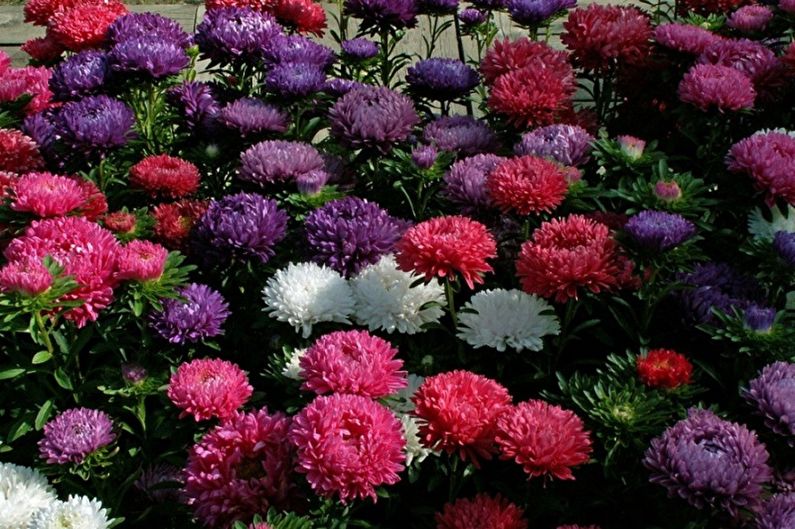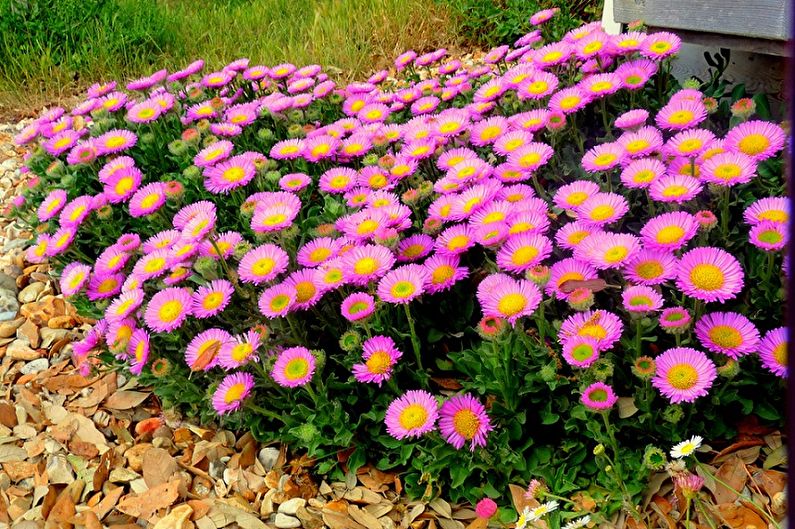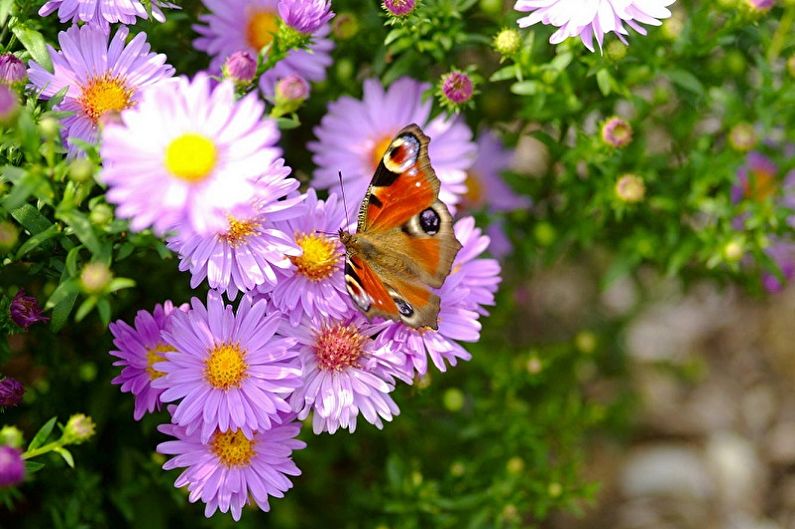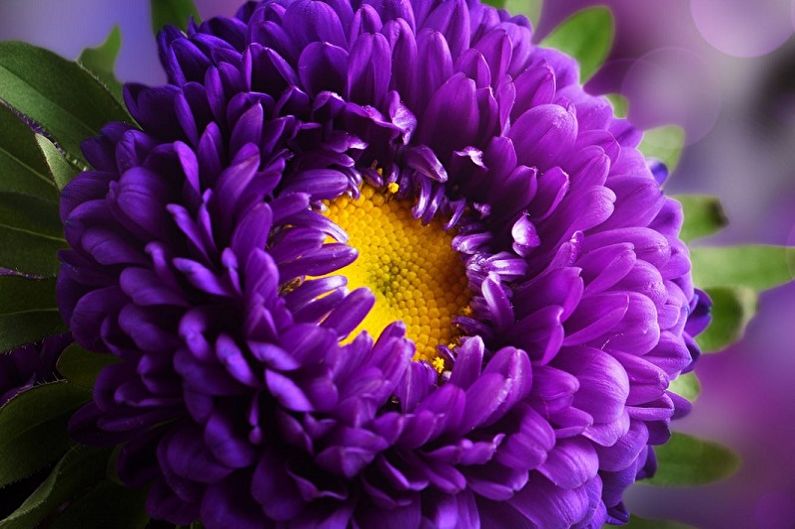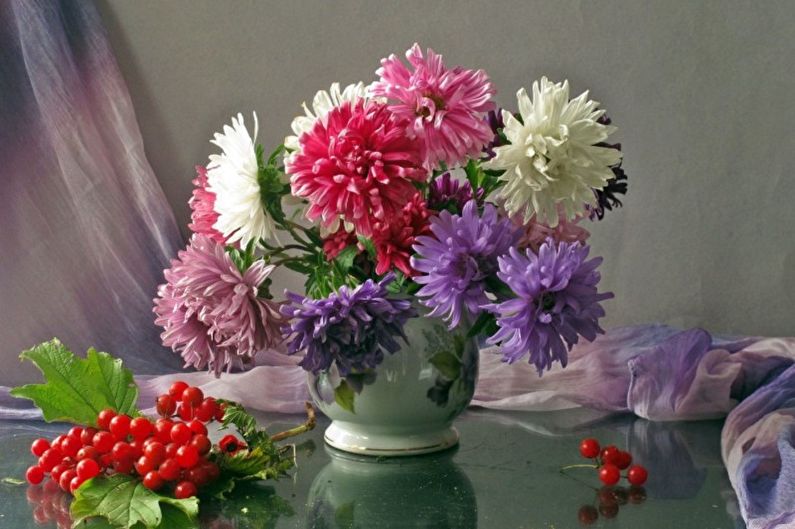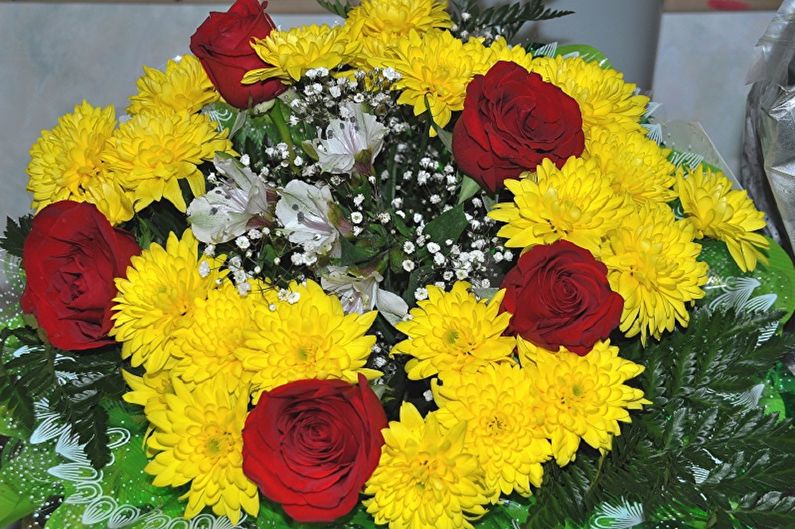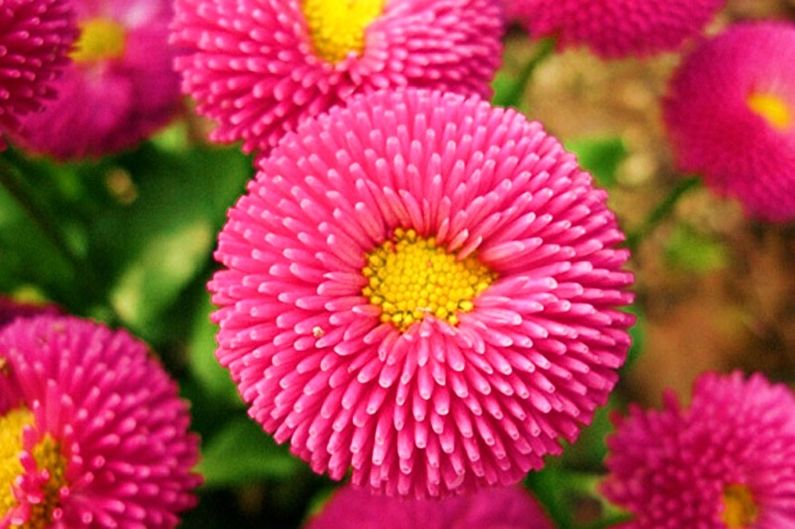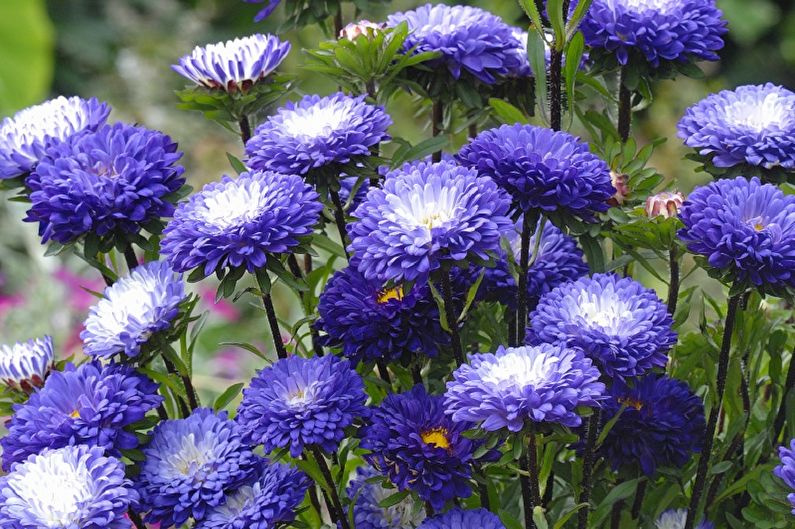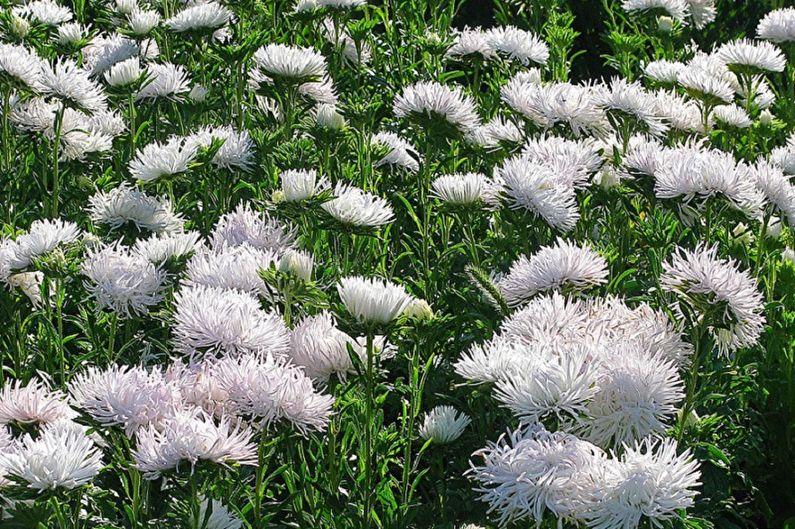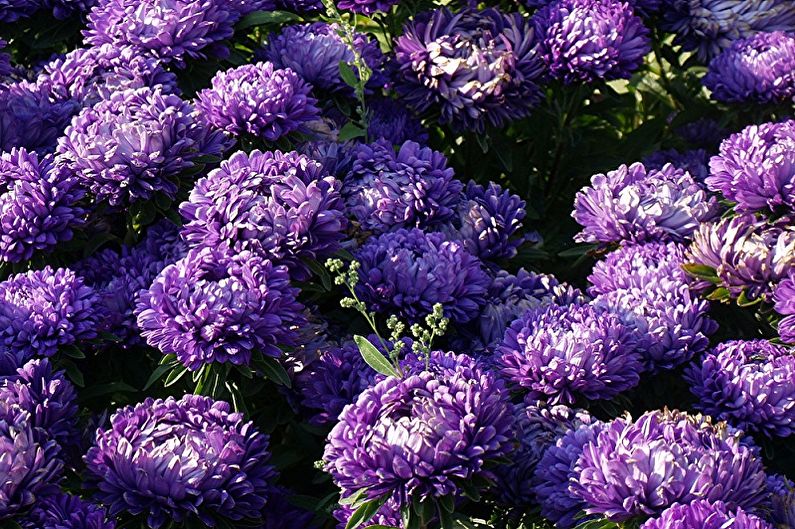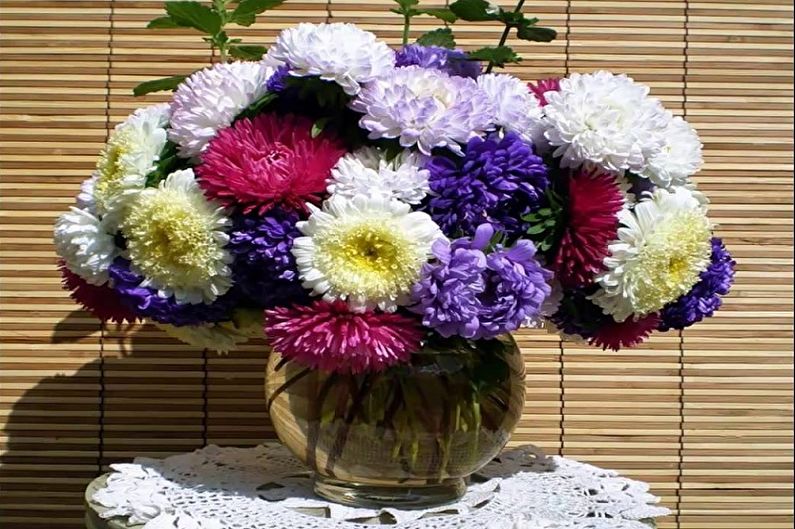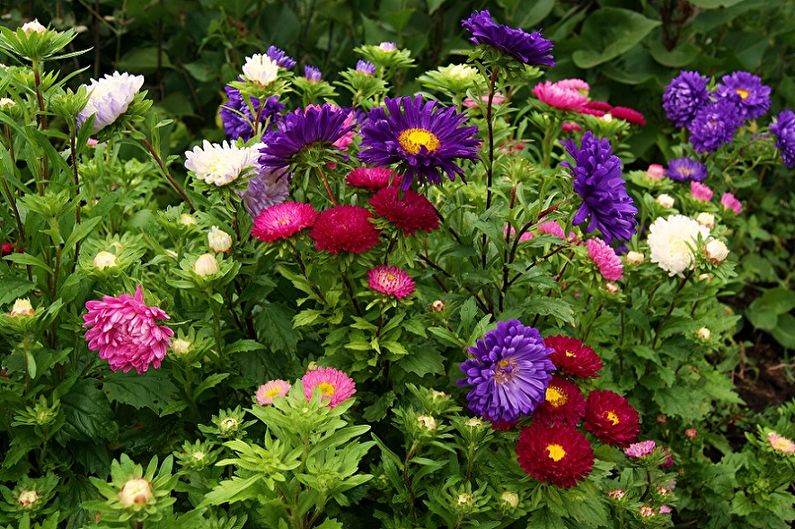
Asters are one of the most famous and sought after flowers in the garden. They have many varieties with different shapes, sizes, color palettes, which is why they attract the attention of landscape designers and simple gardeners. Their decorative qualities, as well as their unpretentiousness to growing conditions allow you to create any composition on the flower beds, arrange hedges, decorate balconies and collect amazing bouquets. In ancient times, the flower was considered a talisman, it was often planted near houses and temples, and the ancient Greeks dedicated it to Aphrodite, personifying beauty and unfading youth.
The main types
To date, a huge number of varieties of this plant is known - about 4 thousand, which are conditionally divided into 40 variety groups. But the aster population is not limited to this, and every year the number of newly bred species increases. The classification of the culture is quite complex, including the distribution of varieties depending on various characteristics: color, size, shape of the petals, flowering time, nature of use, etc. Among the variety, there are the most common varieties represented by perennial and annual species.
Perennial asters
This group brings together representatives of various sizes and colors. Tall ones are used to decorate flower beds, and small ones are used in landscaping for arranging rockeries, alpine hills. Here you can highlight such popular varieties as:
Marie Ballard - voluminous bushes, mottled with blue buds. Flowering can be enjoyed for about two months. The culture is perfect for cutting.
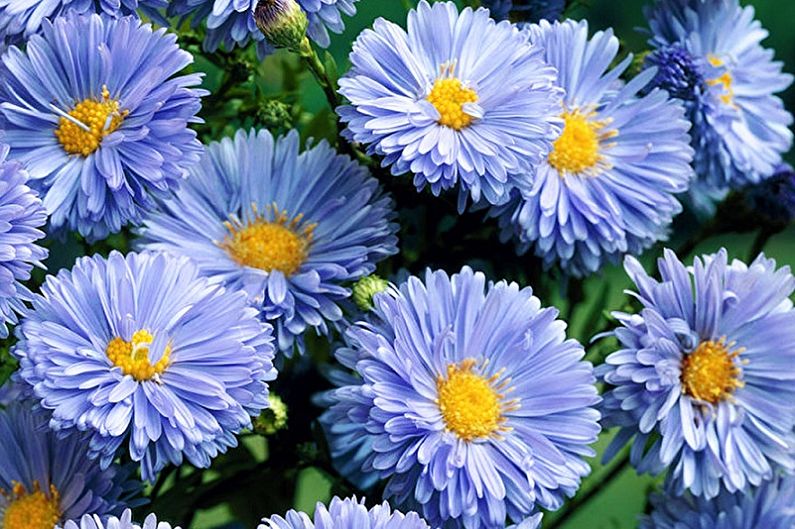
"Violet" - small compact bushes, often decorating the facades of flower beds. It has beautiful violet with blue flowers forming a continuous cover.
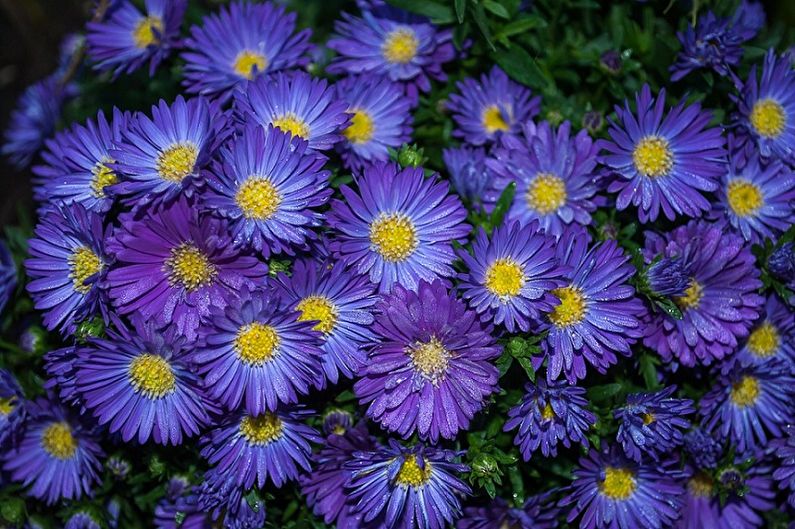
"White Lady" - a one and a half meter beauty, covered with many small white or light pink flowers, looks great on the site, even growing alone.
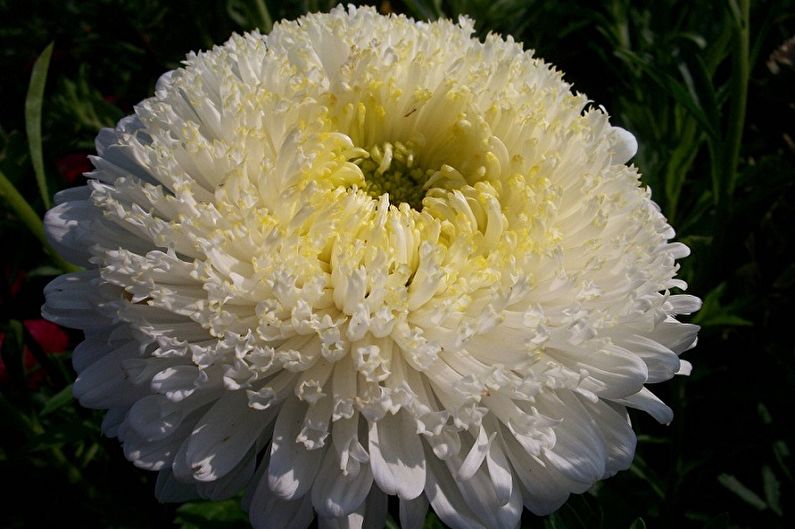
Constgans - It is distinguished by a special branching ability to bloom before the onset of frost. It has saturated dark purple buds with a yellow core, which form a real "carpet" during flowering.
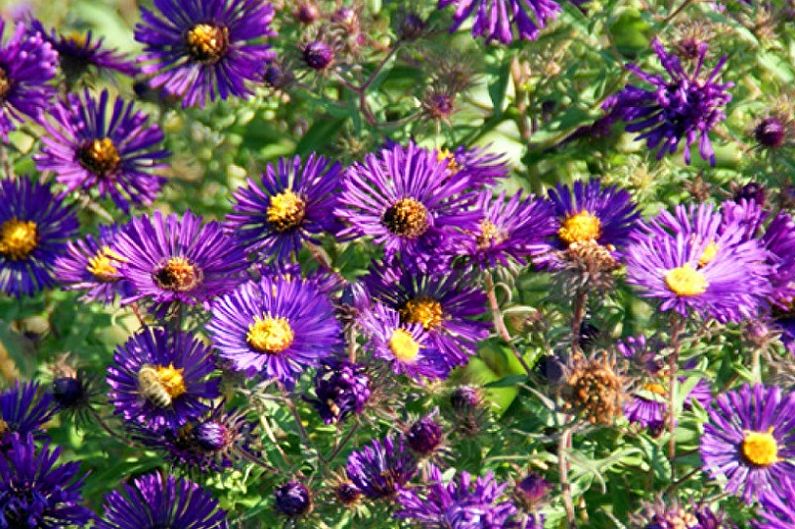
Bars Pink - a chic shrub growing up to 1.5 m. Small buds (about 4 cm in diameter) have a pink color, suitable for cutting.
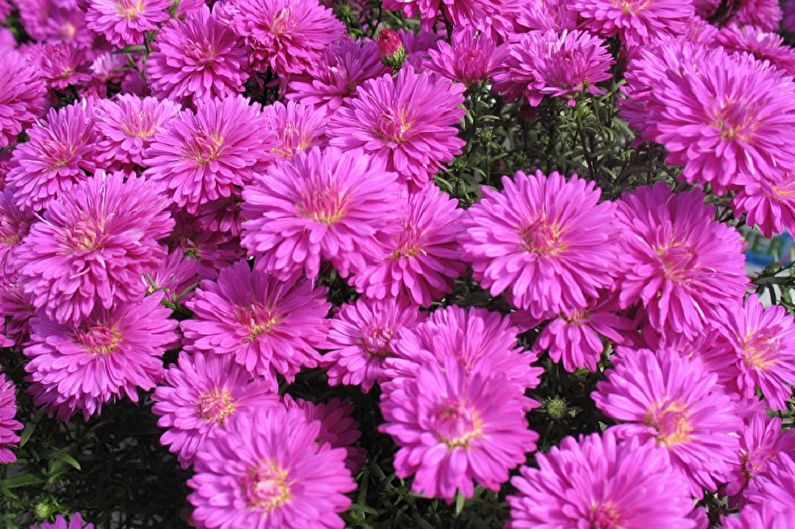
Gnome - a short, spherical bush, not exceeding a height of two tens of centimeters. Flowering, represented by a large range of colors, lasts from July to late autumn. Due to its compact size, this mix can decorate not only garden plots, but also home flowerpots and balcony boxes.
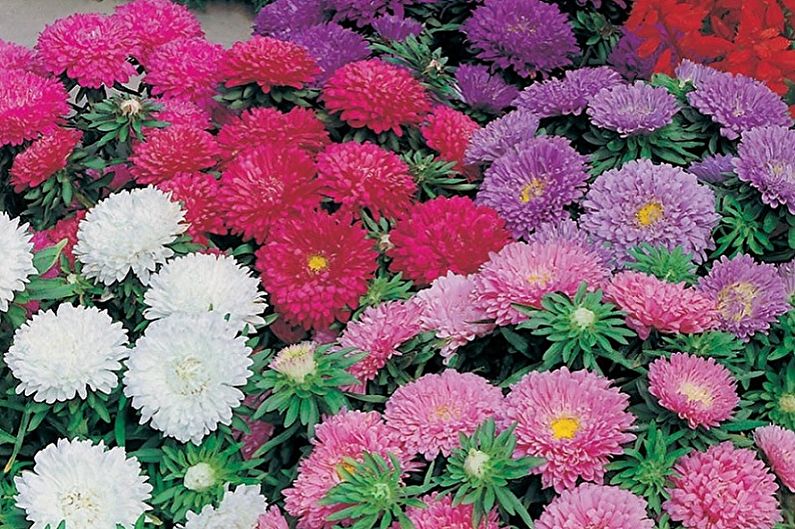
"Rose flower" - A great option for bouquets. It has flowers with doubled petals - flat pink and tubular brown.
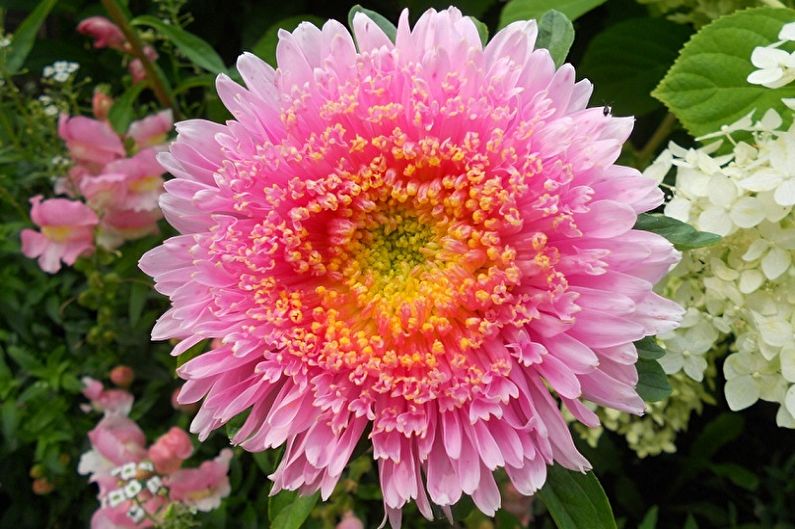
Freecart - the flowers of these asters look like chamomiles, but have a beautiful lavender-blue color. The bushes have subtle inflorescences that bloom alternately, creating a long lasting flowering.

Annual asters
This group includes about 600 species, among which there are representatives of different heights and color spectra, with different bud sizes and other characteristics. The same group includes simple and terry baskets. Consider some pretty popular beautiful varieties, namely:
"Galaxy" - has double inflorescences about 8–9 cm in diameter, presented in a variety of colors. It is widely used in bouquet compositions.
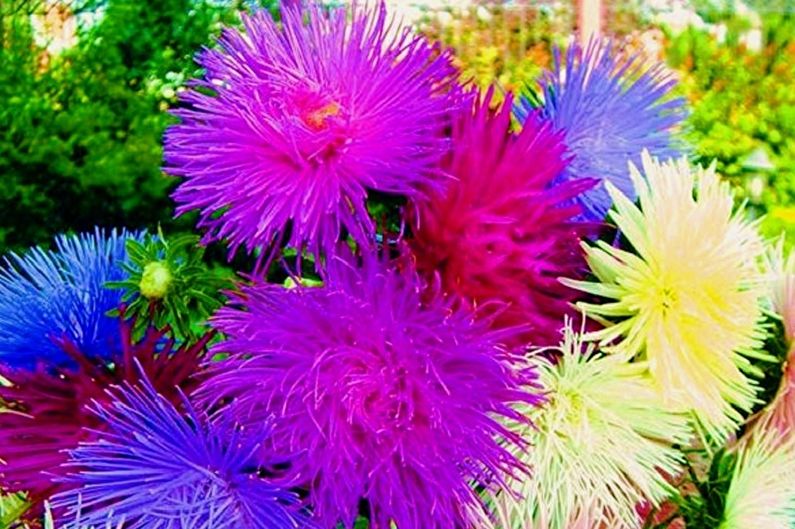
"Dwarf" - has charming peony white flowers.The bushes are compact, grow up to 30 cm, making them suitable for growing in flowerpots and drawers.
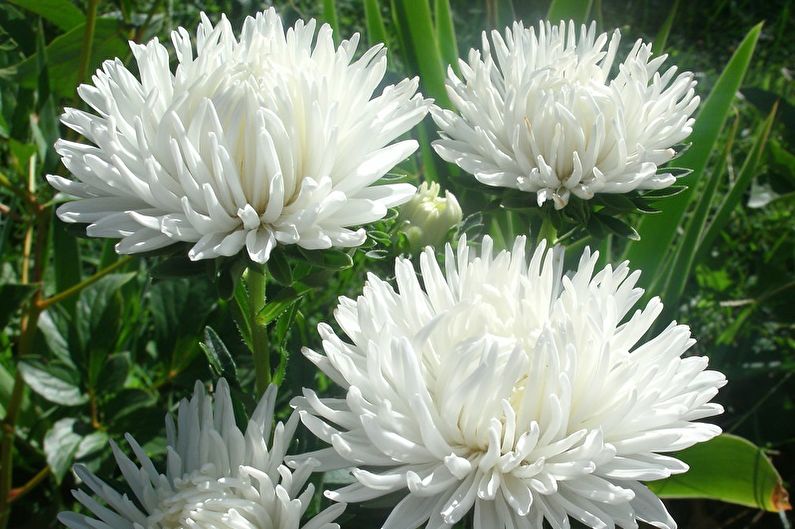
"Symphony" - tall culture, reaching a meter mark. A feature of terry flowers is the original color - purple-red petals are framed by a graceful white border. Flowering is plentiful and long.
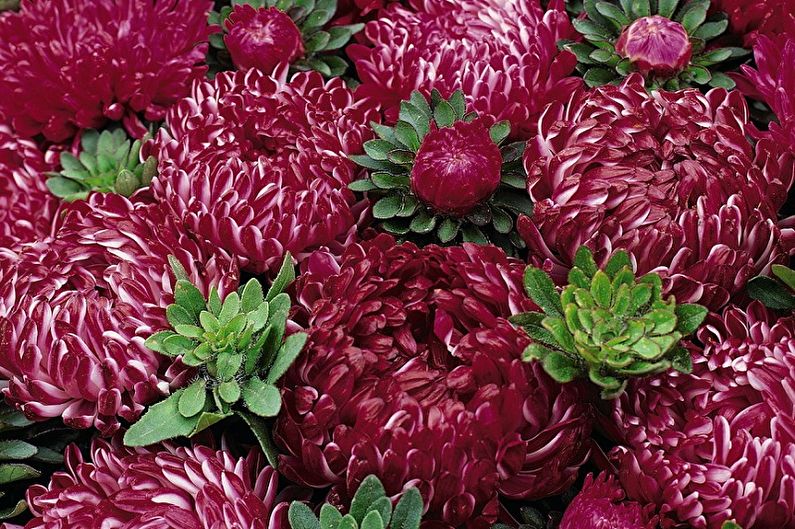
"Lady Coral" - It has large buds about 16 cm in diameter with a variety of colors. Often adorns flower beds, but also looks great in a single version.
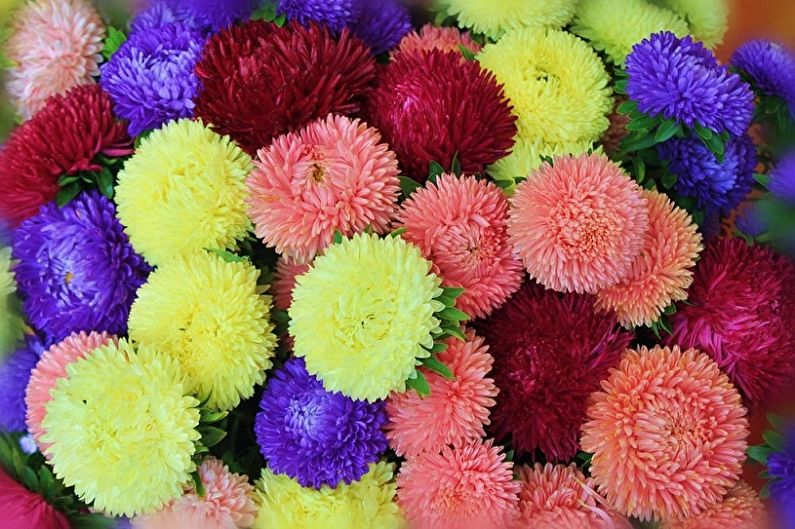
Proper care for asters
Caring for asters does not bring much trouble. An important condition for its comfortable existence is loosening and weeding the soil, which are carried out simultaneously with irrigation or after heavy rain.
Lighting
Astra feels equally comfortable both in well-lit areas and in partial shade. For a more magnificent flowering, it is better to choose open sunny areas or balconies overlooking the south side. Good lighting is necessary for the plant when it is at the stage of young seedlings.
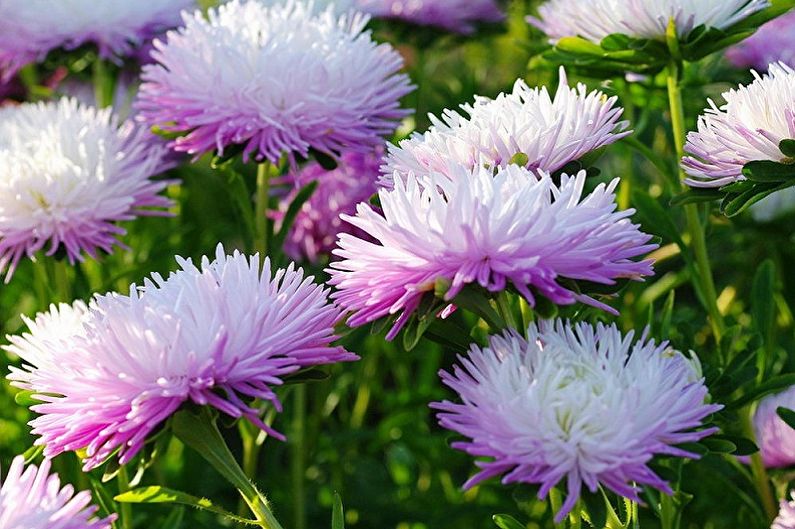
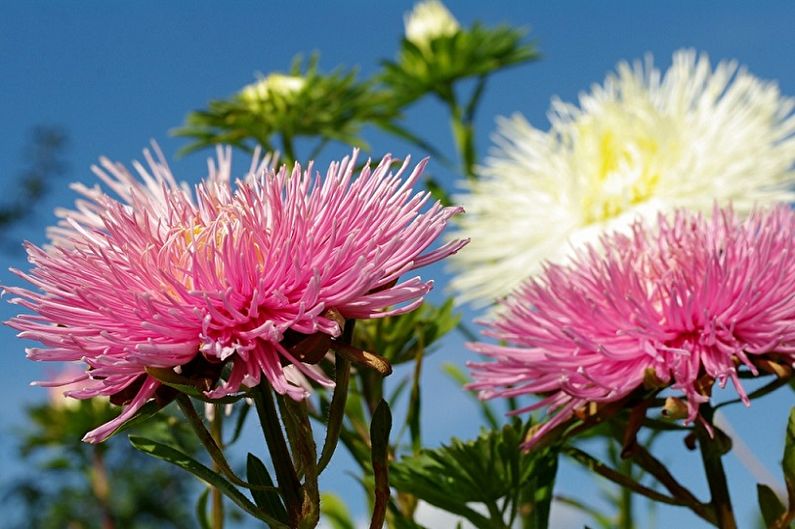
Temperature
The optimal range for the growth and flowering of the culture is the temperature + 18 ... + 25C. A special temperature regime must be observed when growing seedlings. Before emergence of seedlings, the container with seeds is stored at a temperature of + 20 ... + 22C, with the advent of the first sprouts it drops to +15, and when transplanted into large containers it rises to +23. An adult plant is quite resistant to temperature changes and, in most cases, can bloom to frost.
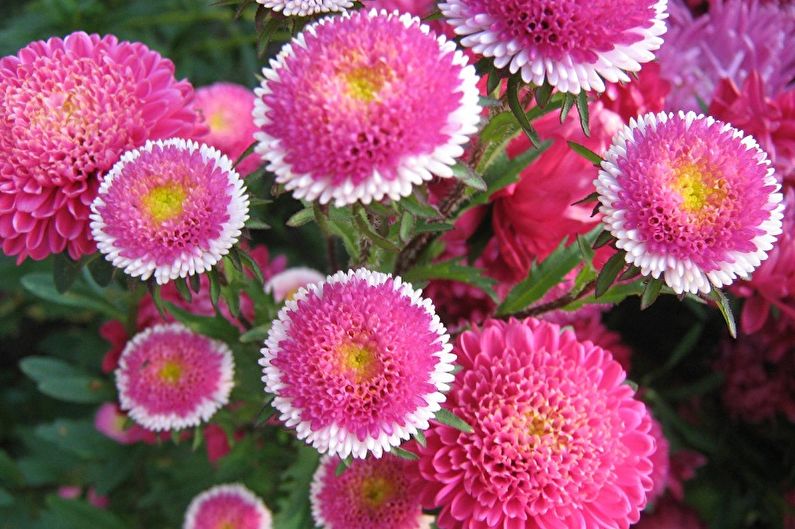
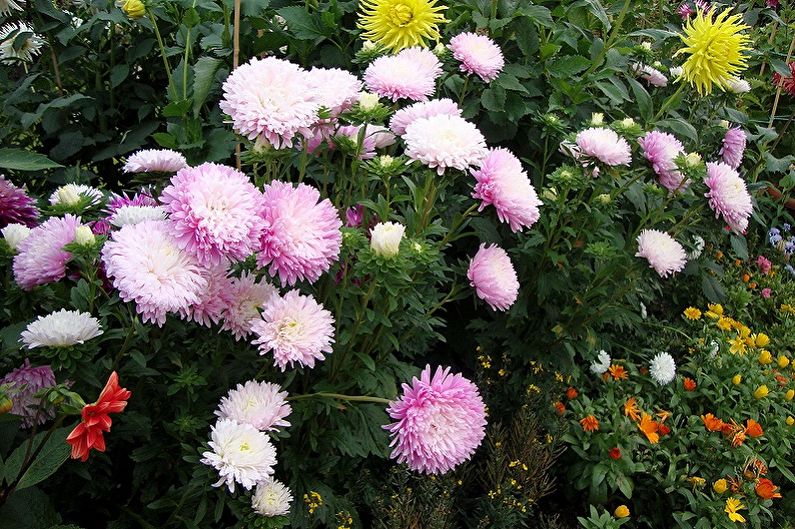
Humidity
Waterlogging of the soil can lead to incurable diseases of the plant, therefore, even during planting, it is necessary to ensure high-quality drainage at the bottom of the landing pit. Light permeable soil with a deep arrangement of groundwater is perfect for planting. Spraying is not applied - regular watering is sufficient.
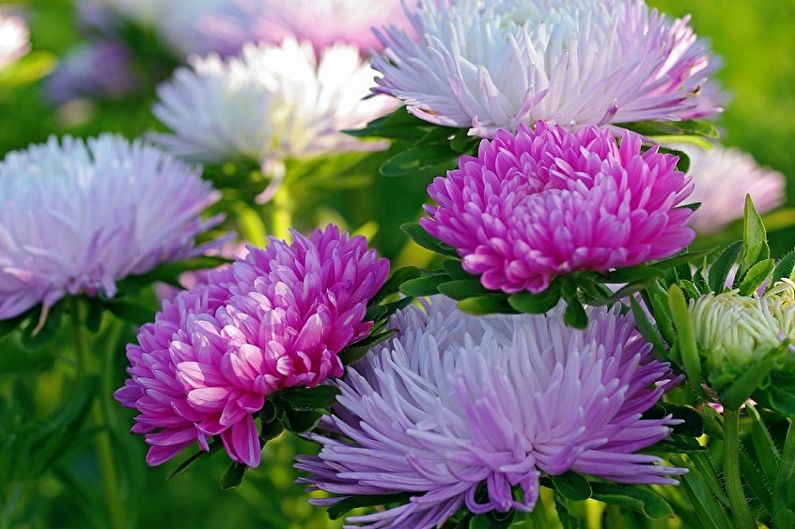
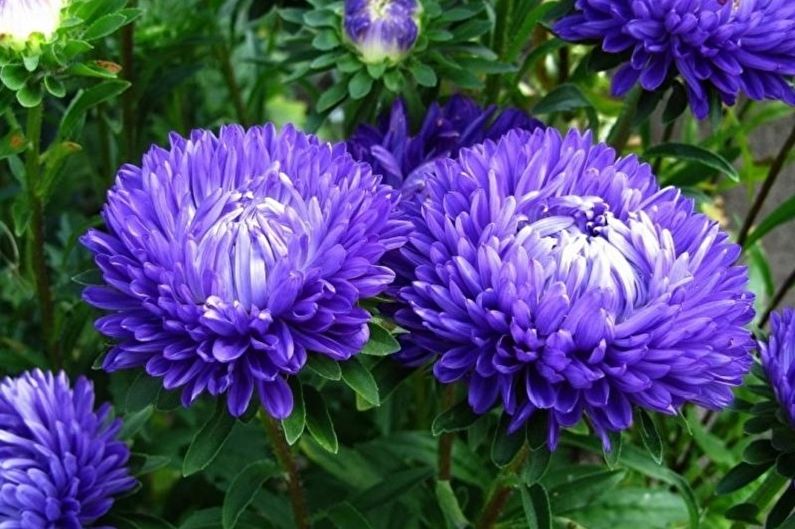
Watering
Astram can equally harm both the drying out of the soil, and its overmoistening. Watering should be regular, but moderate. In the hot season, their number can be reduced, but with each irrigation, increase the volume of water - by 1 sq.m. should leave about 2-3 buckets. In this case, it is imperative to carry out loosening in order to provide air to the root system.
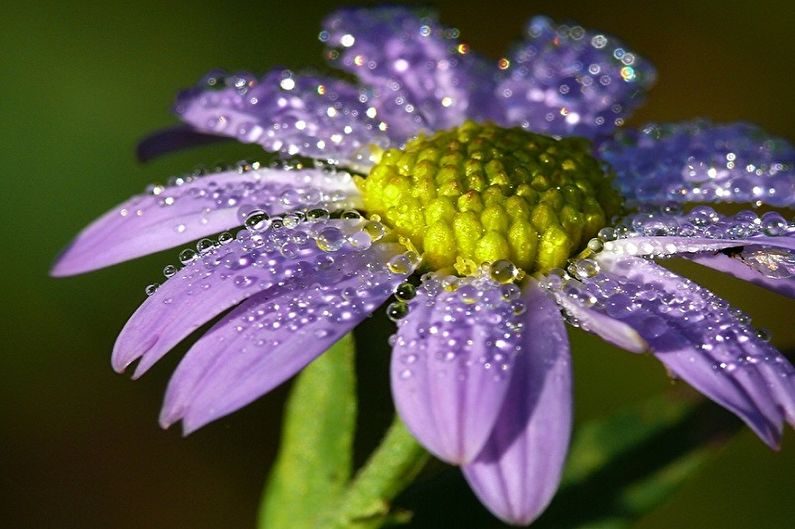
Fertilizers and fertilizing
They feed the aster to a greater extent with mineral fertilizers. From organic fertilizers, you can choose chicken droppings, which are diluted with water in a ratio of 1:20, but it should be used only on poor soils. The first time they are fed with minerals a couple of weeks after planting in the ground, the next two - during the periods of bud formation and flowering.
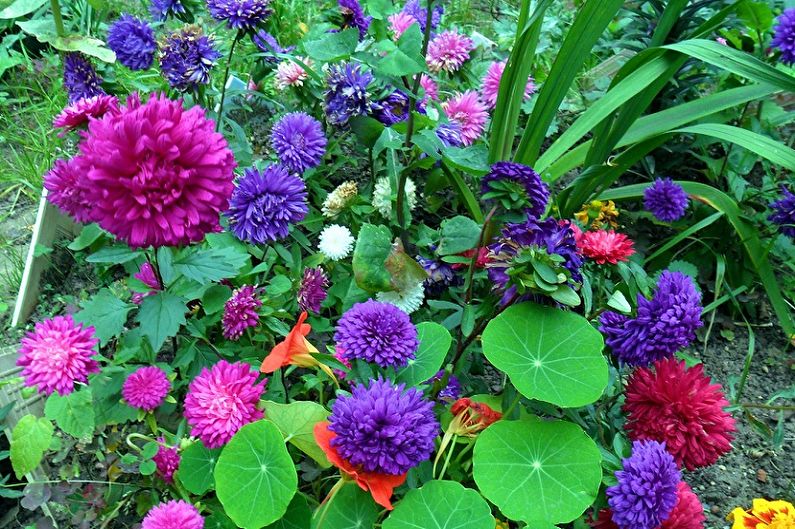
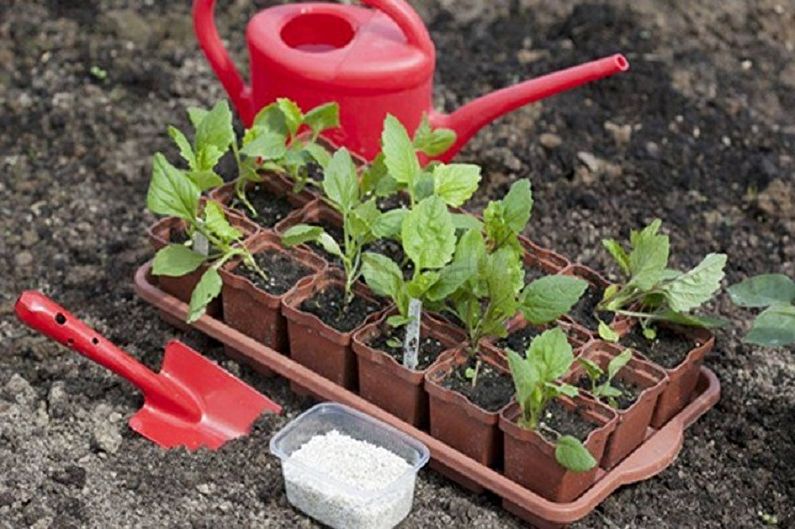
Pests and diseases
The main diseases that can be experienced by aster include fusarium, blackleg, rust and jaundice. Most often, you may encounter Fusarium, leading to wilting. It is impossible to save a culture - it must be removed and burned. In an aster who has become ill with a “black leg”, the rhizome rots, the bush turns black and wilts. The plant is removed from the soil, which is then cultivated with potassium permanganate. "Rust" is characterized by bloating and drying of the leaves. "Jaundice" is much less common, mainly pests like cicadas and aphids carry it. It is manifested by burnout of leaf blades, stunting and budding. In this case, spraying with insecticides will help.
Among the pests, the most dangerous are spider mites, meadow bugs, earwigs, aphids and slugs. As a preventive measure, it is necessary to dig the soil every fall with the removal of the remnants of annuals. Chemicals such as baseazole, metaldehyde, karbofos, etc. will help to cope with pests.
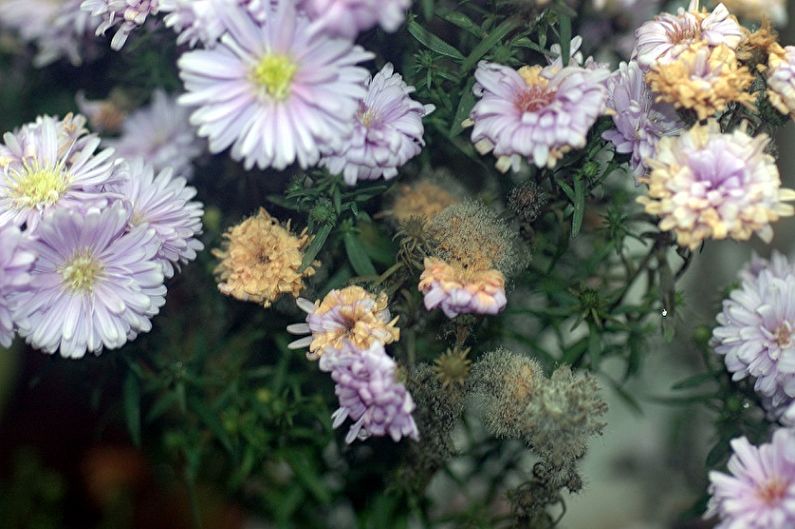
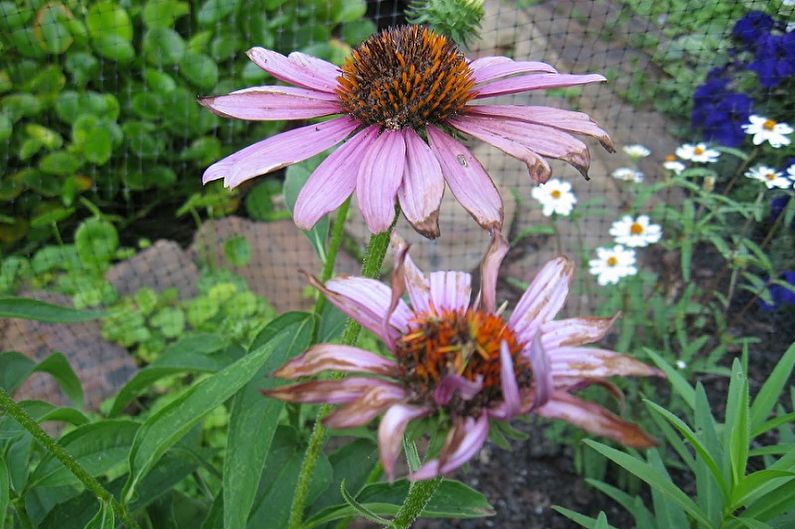
How to transplant aster
The site of the proposed planting of an aster must be selected and prepared in the fall. A sunny area with light fertile soil is better, which must be dug up by adding humus or compost of 2 kg per 1 sq.m.Digging again in the spring is repeated, but with the addition of superphosphate (20 g / 1 sq. M). It is advisable to moisten the soil before planting. Bushes are planted in pits at a distance of at least 25 cm from each other, but it can be large, depending on the estimated size of an adult bush of one sort or another. Planting should be sprinkled with earth, but not watered. The first watering should be carried out after 3 days, and after a couple of weeks, apply nitrogen fertilizers to the soil.
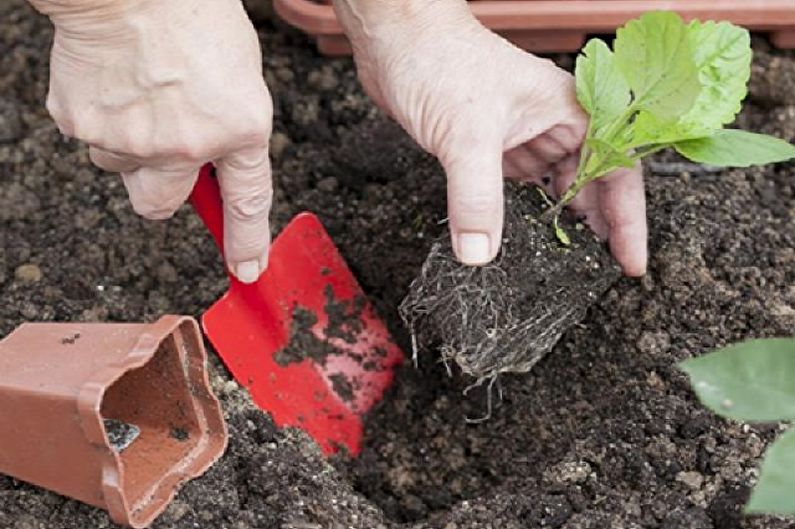

Propagation of aster at home
The most common method for growing asters, applicable to all species, is to obtain seedlings from seeds. Perennials are often propagated by cuttings or division of the tuber.
Seed propagation
Seeds can be planted in open ground in spring, when the temperature reaches + 20C. Most often, seedlings are grown at home, creating a greenhouse. The tank must be filled with a universal composition of the soil, plant seeds to a depth of half a centimeter and pour with a weak solution of potassium permanganate. Next, cover the landing with glass or polyethylene and place in a warm place with a temperature of about +22. Every day the greenhouse is ventilated, and the bed is carefully watered with warm water at room temperature. In a week, the first sprouts will appear - then the protection must be removed, and the container should be moved to a well-lit place, but with a reduced temperature, in order to avoid stretching of the sprouts. Dive is carried out with the advent of the first full leaflets.
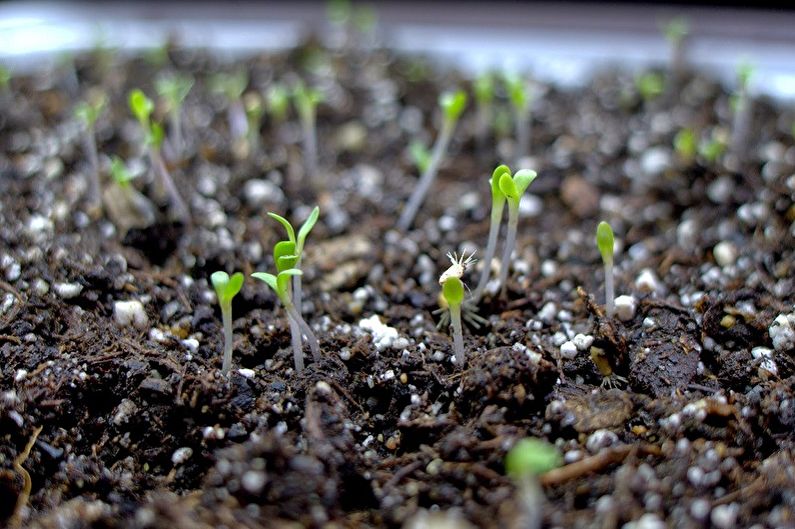
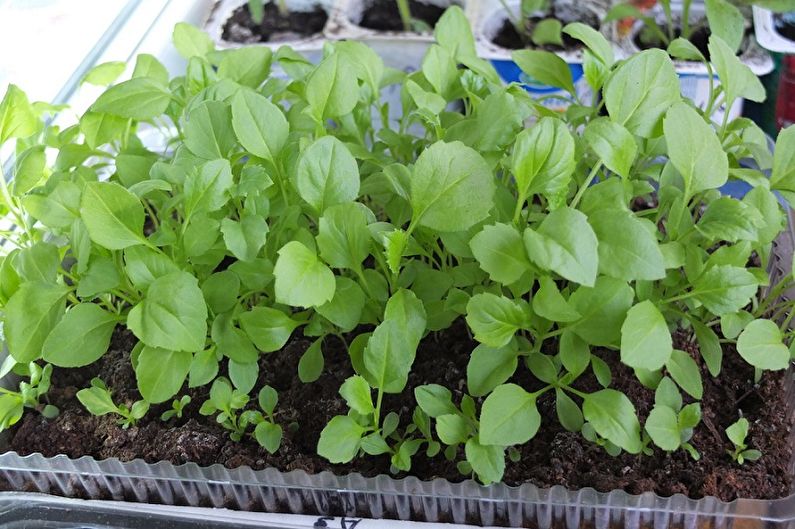
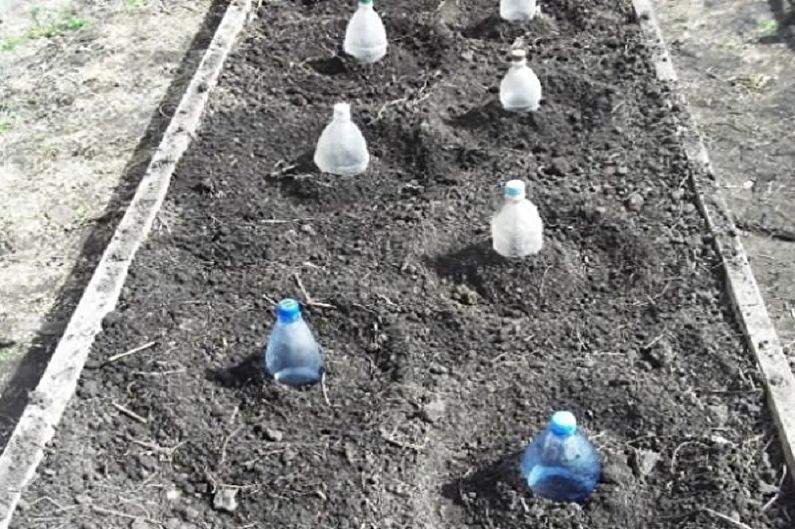
Propagation by cuttings
Cuttings can be carried out throughout the summer. To do this, cut off the top of the plant up to 7 cm long and plant it in a small container (glass) or on a prepared bed with sand and peat in the soil. At home, the cuttings should be located in a dark place. At the time of rooting of sprouts located in the open ground, it is necessary to create greenhouse conditions, so they are covered with transparent plastic bottles. After a month, the plant is considered quite full.
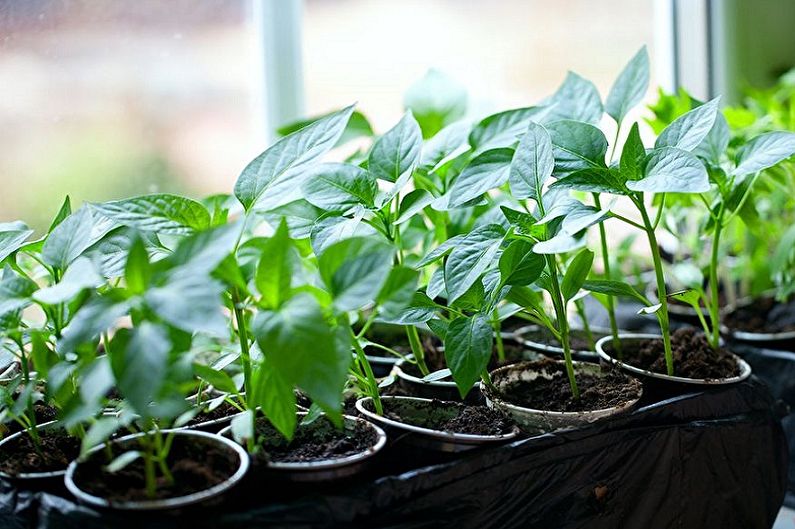
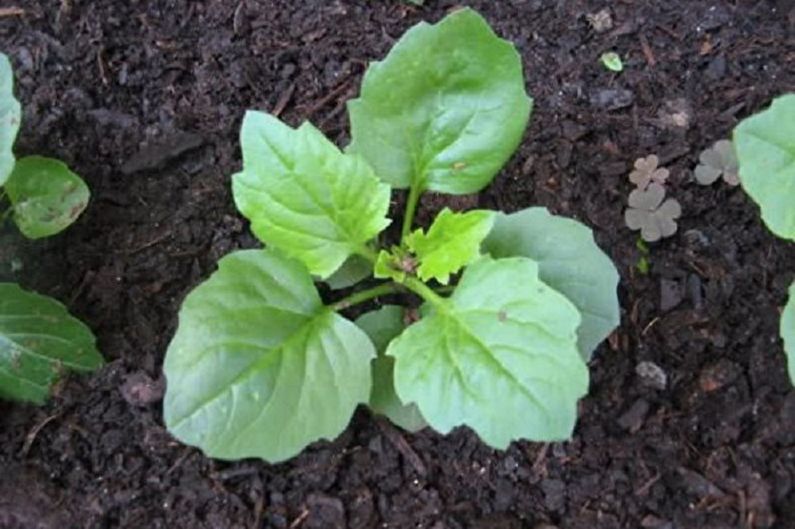
Division propagation
The procedure for dividing the perennial bush is carried out in the spring - then the first flowering can be seen already in the autumn of that year. It is necessary to separate the segment from the mother bush in such a way that it has from 3 to 5 shoots and at least one bud with roots. The plant is planted in a prepared hole and sprinkled with a three-centimeter layer of earth, systematic watering is carried out for quick rooting.
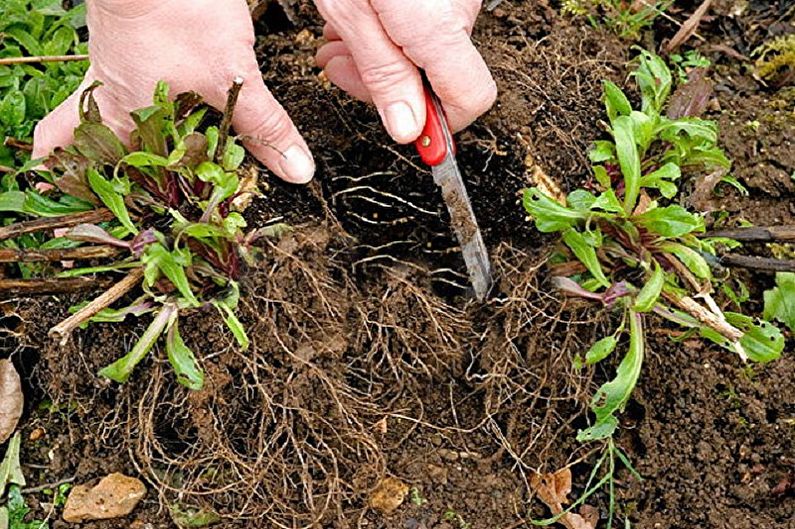
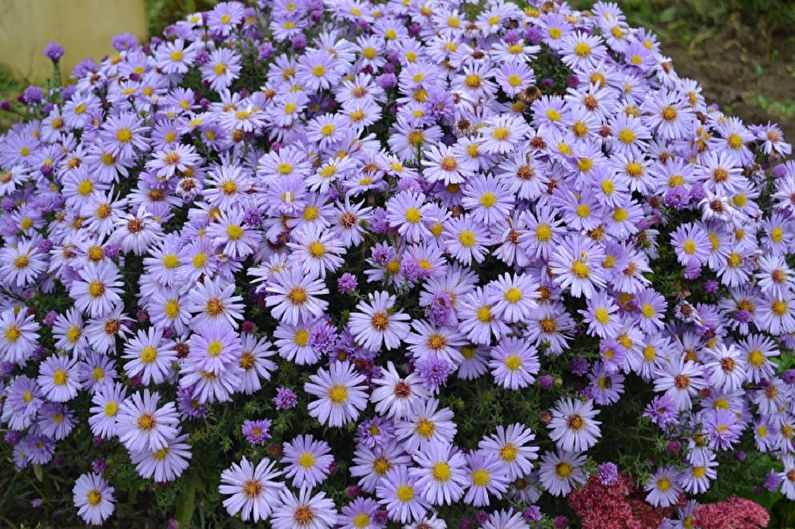
Asters - photo
There are many ways to transform a personal plot using a variety of varieties of asters. They look great in single linear and group landings, on rocky terrain and in border designs. You can learn more about this beautiful representative of the flora from the photos collected in our gallery. Enjoy watching!
